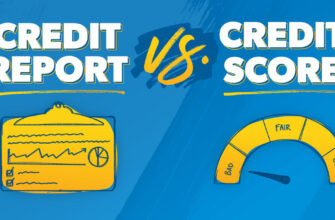As peer-to-peer lending platforms gain popularity, questions arise regarding the safety of P2P credit and whether it can be considered a reliable form of loan. This review aims to provide insights into the safety aspects of P2P credit and clarify its nature as a loan.
The safety of P2P Credit
Is P2P Credit Safe?
The safety of P2P credit depends on various factors, including platform reliability, borrower risk assessment, and diversification strategies. Here are key considerations:
- Platform Reliability: The safety of peer-to-peer credit heavily relies on the reputation and reliability of the lending platform. It is crucial to choose platforms with a solid track record, transparent operations, robust security measures, and reliable customer support. Thoroughly researching and selecting reputable platforms can enhance the safety of P2P credit.
- Risk Assessment: peer-to-peer lending platforms typically employ risk assessment mechanisms to evaluate borrowers’ creditworthiness. These mechanisms involve analyzing factors such as credit scores, income verification, and loan purpose. Platforms with stringent risk assessment practices reduce the likelihood of lending to high-risk borrowers, enhancing the safety of P2P credit.
- Diversification: Lenders can enhance the safety of their P2P credit investments through diversification. By spreading their investments across multiple loans, lenders can minimize the impact of defaults. Diversification allows lenders to mitigate risk by not relying solely on the repayment performance of a single borrower.
- Default Risk: peer-to-peer credit carries the inherent risk of borrower default. Despite risk assessment measures, there is always a possibility that borrowers may fail to repay their loans. Lenders should be aware of this risk and consider it when investing in P2P credit. Proper risk management, diversification, and thorough understanding of the borrowers’ creditworthiness can help mitigate this risk.

Is P2P a Loan?
Yes, P2P credit can be considered a loan. When a borrower requests funds through a peer-to-peer lending platform, they are essentially seeking a loan from individual lenders participating on the platform. The lenders, acting as individual investors, provide the requested funds to the borrower. The borrower then repays the loan amount, along with interest, over a predetermined period. Hence, P2P credit functions as a loan, connecting borrowers and lenders directly without the involvement of traditional financial intermediaries.
Is it legal to P2P lending?
The legality of peer-to-peer lending varies from country to country, as it is subject to the regulatory framework of each jurisdiction. Some countries have embraced and regulated P2P lending, while others may have restrictions or no specific regulations in place.
In general, P2P lending platforms need to comply with financial regulations, consumer protection laws, and anti-money laundering (AML) and know your customer (KYC) requirements. These regulations aim to ensure transparency, fairness, and the prevention of illicit activities within the P2P lending ecosystem.
It is important for both borrowers and lenders to understand the legal landscape and regulatory requirements related to P2P lending in their respective jurisdictions. This includes understanding any licensing or registration obligations for lending platforms and compliance with investor accreditation or borrower eligibility criteria.
If you are considering participating in peer-to-peer lending, it is advisable to consult with legal and financial professionals familiar with the laws and regulations in your specific country or region. They can provide guidance on the legal requirements and obligations associated with P2P lending activities.

When participating in peer-to-peer (P2P) lending as a lender, there are a few steps involved in receiving money:
- Register on a P2P Lending Platform: Sign up and create an account on a P2P lending platform of your choice. Complete any necessary registration processes, including providing identification and verifying your financial details.
- Deposit Funds: In order to lend money through the platform, you will need to deposit funds into your account. The specific method of deposit may vary depending on the platform, but commonly accepted methods include bank transfers or linking your bank account to the P2P lending platform.
- Browse and Select Loans: Explore the available loan listings on the P2P lending platform. These listings typically provide details about the borrower, loan amount, interest rate, loan term, and risk profile. Choose the loans you wish to fund based on your risk tolerance and investment preferences.
- Invest in Loans: Once you have selected the loans, you can allocate your funds to them. You can either manually invest a specific amount in each loan or use automated investment tools provided by the platform to diversify your investment across multiple loans.
- Loan Disbursement: When the loan is fully funded by you and potentially other lenders, the platform will disburse the loan amount to the borrower. This typically happens once the loan reaches its funding target or within a specified timeframe.
- Loan Repayments and Earnings: As the borrower makes repayments on the loan, including both principal and interest, those funds are distributed to the lenders. The P2P lending platform manages the repayment process and credits your account with the corresponding amounts.
- Withdraw Funds: Once you have received repayments and earned interest on your investments, you can choose to withdraw the funds from your P2P lending platform account. Withdrawal methods may vary by platform but commonly include bank transfers or linking your bank account to the platform for direct transfer.
It’s important to note that the specific procedures and features may differ among P2P lending platforms, so it’s advisable to familiarize yourself with the platform’s guidelines and policies regarding receiving money before participating.








